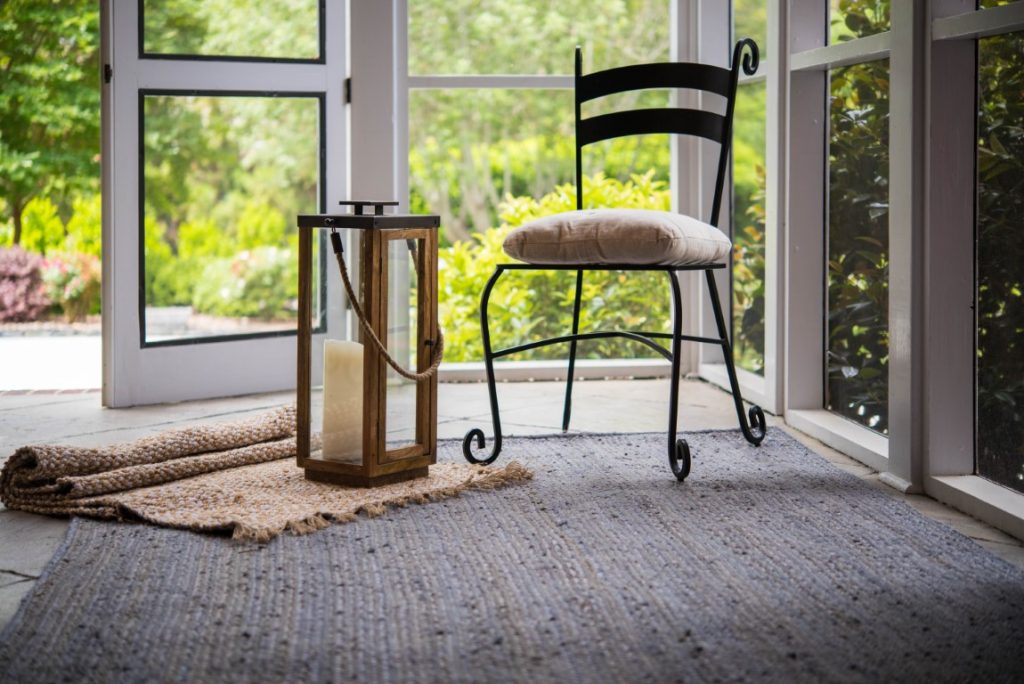Soft, sustainable, and durable natural fiber rugs are perennial favorites to professional and amateur interior designers alike. Especially popular in modern and coastal styles, the neutral color palettes and visual simplicity of jute and sisal rugs make them extremely versatile and easy additions to any space. This week, we’re focusing on these amazing articles of design and showing you how to get the natural look in your own home.
What Are Natural Rugs Made Of?
“Natural” is an umbrella term that covers a wide range of rug materials and styles. Simply put, natural rugs are made from materials found in (you guessed it) nature. Unlike synthetic materials like polypropylene, these materials come from renewable sources, tend to be hard-wearing, and are extremely affordable.
Typically, “natural” is used to describe rugs made tough plant fibers like jute, sisal and seagrass, but it also includes softer materials like cotton and wool. Each of these materials have their own pros and cons. It’s important to get to know each of your options to make sure you are picking the best rug for your needs.
Jute
Perhaps best known as the material used in burlap, jute is a soft, durable natural fiber and an easy favorite. With their typically light beige color and chunky, “perfectly imperfect” texture, jute rugs are a great way to add an organic element to your space.
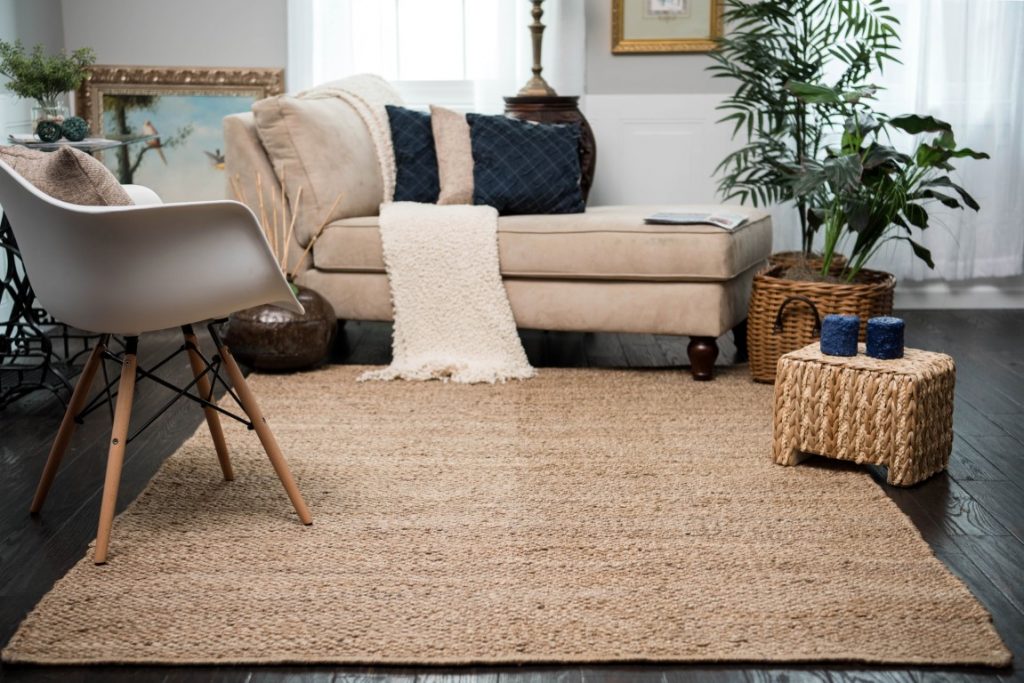
As one of the softer natural rug materials, jute doesn’t compromise on comfort. However, this also means jute is one of the least durable materials used in natural rugs. Jute rugs are best used in medium to low traffic spaces like bedrooms and living rooms.
Sisal
Made from dried agave sisalana fibers, sisal rugs are some of the most durable natural rugs on the market. While they offer similar earthy hues as jute rugs, sisal fibers tend to be a bit finer. This means sisal rugs will have a clean, more uniform look vs the chunky weave of jute.
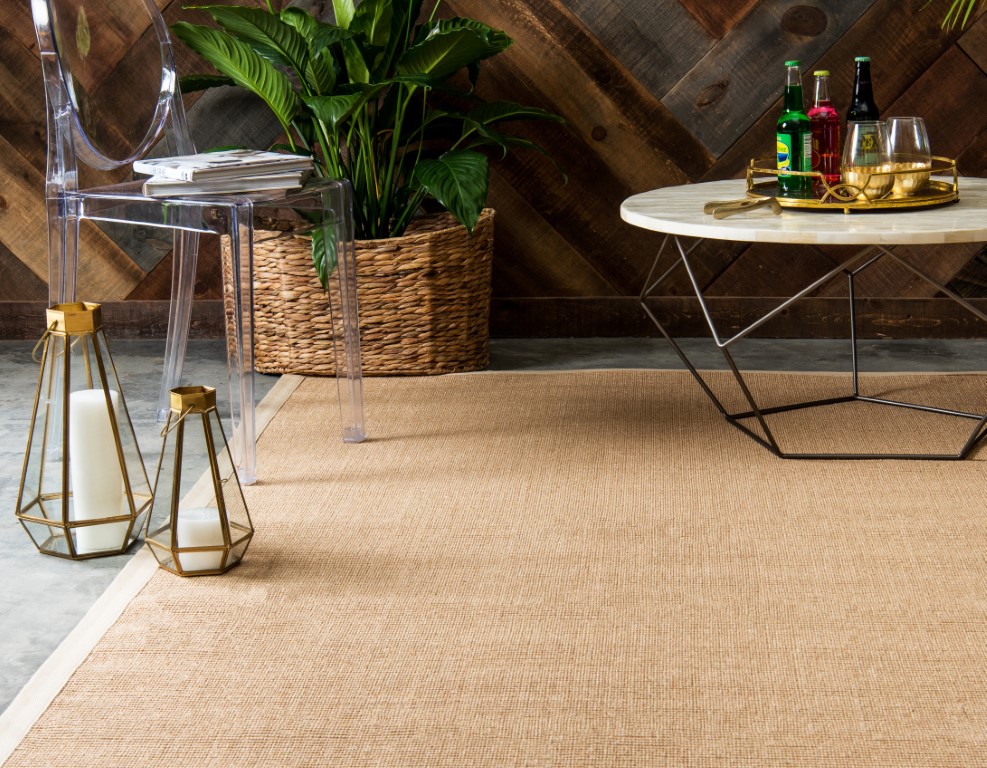
The tough fibers of sisal rugs can stand up to a lot of abuse, but that does come at the cost of some comfort. Sisal fibers are coarse and can feel a bit “scratchy” underfoot. Sisal is also very absorbent and prone to discoloring from spills. These rugs are best to use in high-traffic areas where you want a clean, modern look.
Cotton
Cotton rugs are often overlooked in conversations about natural rugs. While cotton technically is a natural plant fiber like jute or sisal, it does look and feel quite different. Cotton rugs are often made from strips of fabric dyed in bright colors and braided together. Often, that fabric will be recycled from worn out clothes, blankets, or other textiles. In this way, cotton rugs like chindi “rag rugs” are a great way to reduce your environmental impact by giving new life to older products.
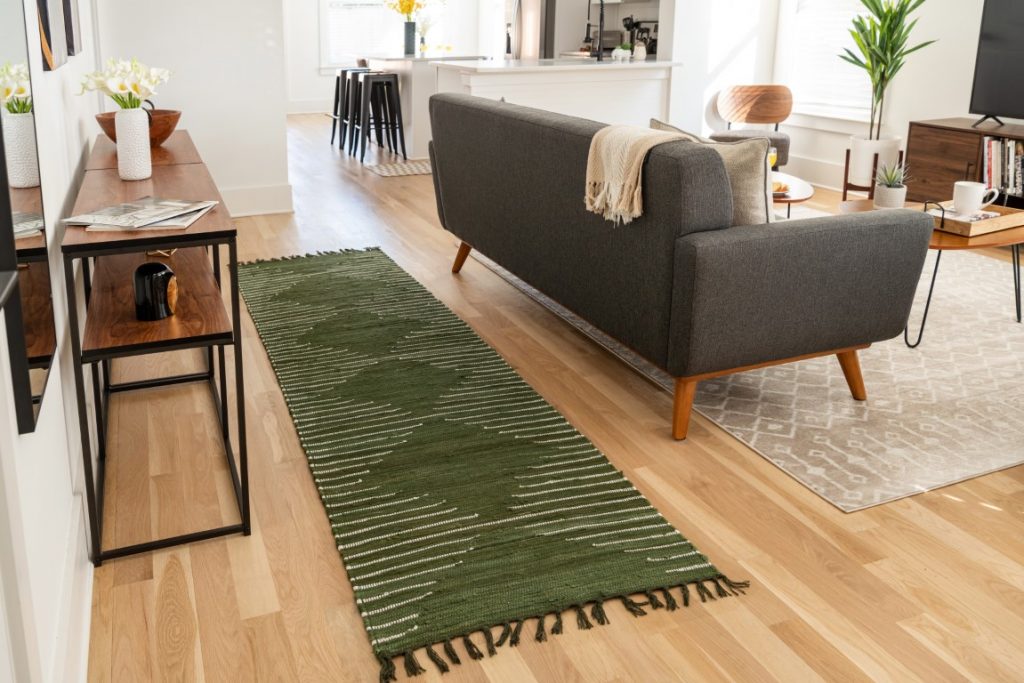
Just like cotton t-shirts, cotton rugs are extremely soft and able to be dyed in bright colors to match any décor style. Like with jute rugs, however, this does come at the cost of some durability. They somewhat make up for this by being washable, and therefore easier to keep looking fresh. Cotton rugs are best in casual spaces with low foot traffic where you need a little extra comfort, like bedrooms.
Wool
Though not made of plant fibers, we would be remiss not to mention wool in this list. Wool is extremely versatile, soft, stain resistant, and holds dye extremely well. Wool is the premier material for rugs. There is a good reason it has been used in rug weaving for hundreds if not thousands of years.
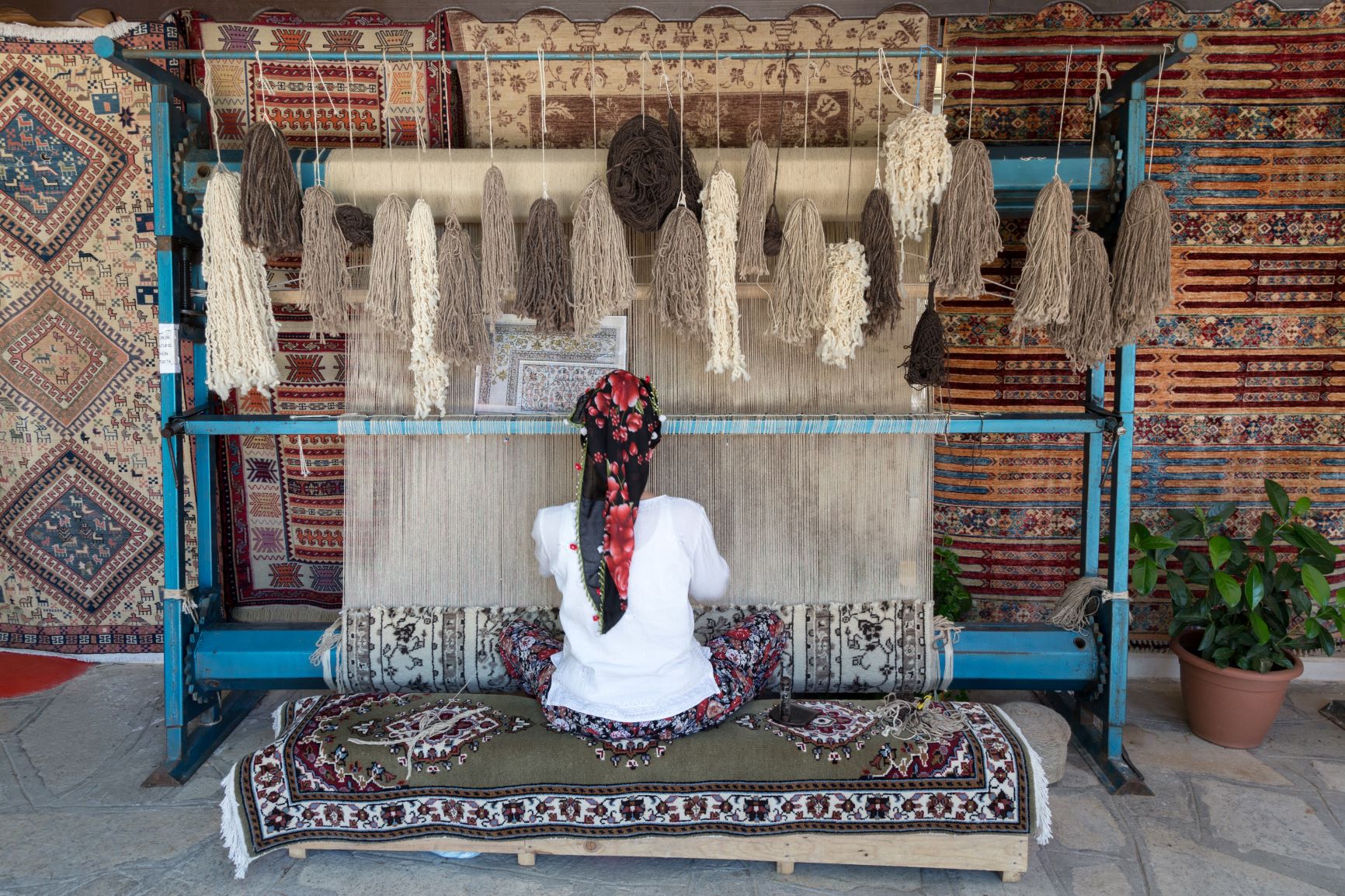
Of course, all these benefits do come at a cost. Wool rugs are often hand knotted. This comes with a high price tag compared to other types of natural and even synthetic rugs. That being said, if you want a rug to be used in nearly any environment and look beautiful while doing it, there is no substitute for wool.
What Are the Benefits of Natural Rugs?
Regardless of the specific material, you can expect all-natural rugs to have a few universal benefits.
First of all, natural rugs are cheap! Except for wool, the materials used in natural rugs are abundant and easy to find. Combine that fact with the relatively simple woven or braided construction of natural rugs and it’s easy to see how it’s possible to find room-size natural rugs at a fraction of the cost of some synthetic rugs.
Natural rugs are also known for their durability and easy maintenance, especially when compared to synthetic rugs. These hard-working rugs look great even after a little wear and are therefore an excellent choice for any level of traffic. They’re also very easy to clean. Natural rugs are typically flatweave or braided, meaning there is no pile for dirt to get trapped in. Cleaning is often as easy as a quick shake.
Finally, natural rugs are eco-friendly and biodegradable. Buying natural rugs over synthetic is an easy way to reduce your environmental impact and beautify your home at the same time.
How to Style Natural Rugs
If you’re trying to incorporate natural rugs into your existing décor, it couldn’t be easier! The neutral hues and plain patterns of jute and sisal rugs are the perfect base for any other color or style of décor. They’re especially popular in modern and coastal styles where the organic textures lend themselves to the warm, clean atmospheres those styles strive for.
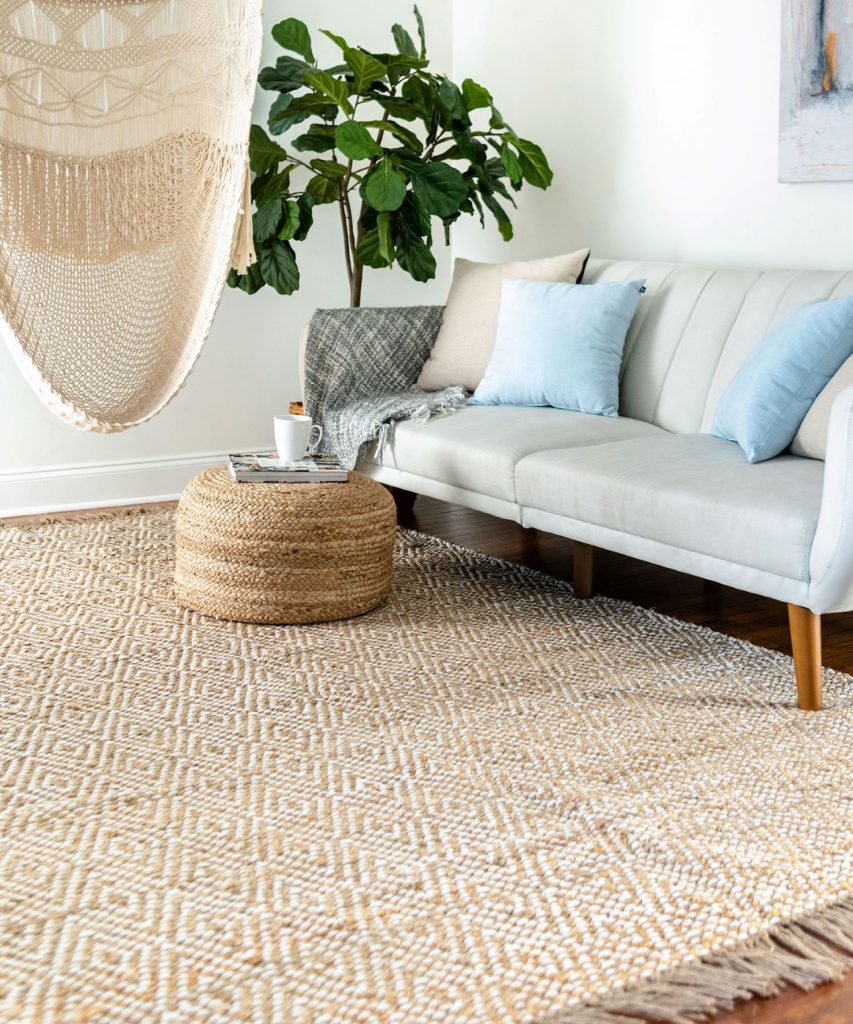
Natural rugs are also the perfect base for layering. If you’ve never tried rug layering yourself, it’s as easy as it sounds. Simply throw one rug over another to add additional texture to your room, better define a space, or even help with noise absorption.

Layering is also a great way to save money. The color, comfort, and quality of Persian and Oriental rugs can’t be matched, but room-sized hand-knotted rugs can be prohibitively expensive. By using a natural fiber rug as a base, you can easily fill the space for cheap. Then, throw a smaller fine rug on top. You’ll get the best of both worlds!
Of course there are many more ways to style natural rugs. While these tips can get you started, don’t be afraid to get creative! We want to see what you come up with, so don’t forget to tag us on Instagram @rugsdotcom with your favorite natural rug pictures.

